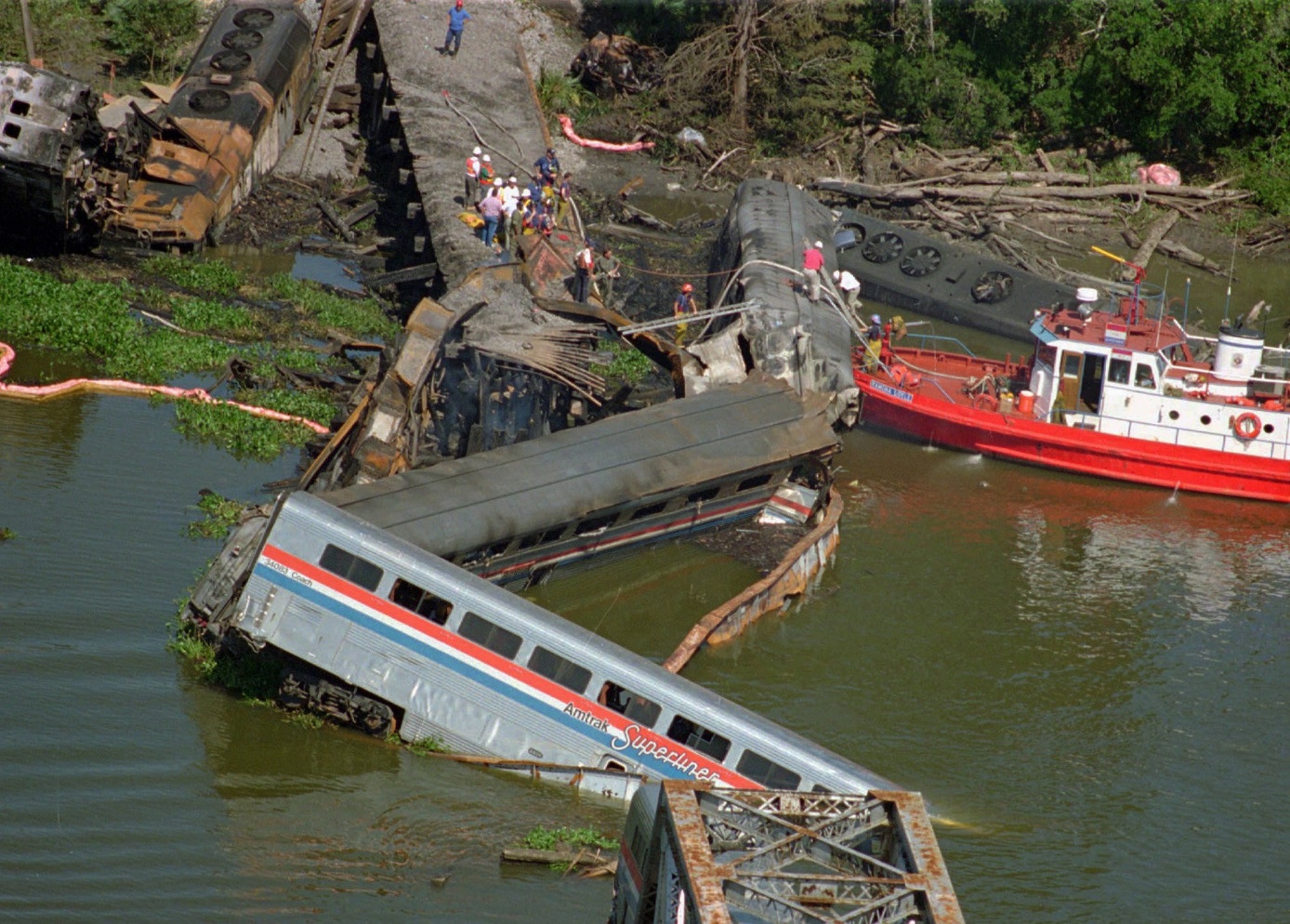The Weekly Reflektion 35/2021
Facilities are built to stand certain loads and loading conditions including loads from undesired events. The design accidental loads are used as the basis for the design the facilities. The dimensioning accidental loads are the loads the facility will most likely be subjected to. It goes without saying that the design accidental loads should as a minimum be capable of withstanding the dimensioning accidental load. Or does it?
Do you know what the design and dimensioning loads are for your facility?

On 22nd September 1993 an Amtrak train derailed and crashed as it crossed the Big Bayou Canot bridge near Mobile, Alabama. 47 people were killed, and 103 persons injured. It was the worst crash in Amtrak’s history.
Eight minutes before the crash the bridge was hit by barges being pushed by a towboat. There was thick fog and the towboat pilot had taken a wrong turning on the Mobile River. The towboat entered the Big Bayou Canot, an un-navigable channel crossed by the bridge. The pilot had not been trained in the use of radar and he did not realise he was off course. The tugboat had neither a compass nor a chart of the waters. The towboat was pushing six barges (two rows of three) and two of the front barges hit the bridge. The first barge damaged the concrete bridge support and caused minor damage. The second barge hit the bridge itself. The bridge had originally been designed as a swing bridge where a section pivoted on one of the bridge-supports to allow river traffic to pass. The swing facility had never been used and the mechanism to swing the bridge had never been installed. The swinging bridge section had however never been secured against unintended movement. The collision knocked the bridge out of alignment by about one meter and put a severe kink in the rails. The rails were continuously welded, and a track circuit was installed that would detect any break in the rails and set relevant signals to stop. Unfortunately, the collision and distortion of the rails did not cause a break. There were 220 passengers and crew onboard when the train hit the deformed rails at about 110 km/hr. The leading locomotive flew through the air and embedded itself in the canal bank. Two other locomotives and four of the eight carriages plunged into the water. The locomotive fuel tanks ruptured and there was a diesel spill and a fire.
A bridge needs to be designed to withstand the likely loads that it will be subjected to. This includes consideration of accident and the loads that these can generate. It would be reasonable to expect that a bridge over a waterway would be designed to withstand any collision from the vessels operating on that waterway, or rather could operate on that waterway.While the Big Bayou Canot was un-navigable it was still possible for vessels to enter the channel. The bridge supports were allegedly designed to withstand boat collisions. The swinging part of the bridge was not designed to withstand a collision and was particularly vulnerable since the ends were not secured.
Do you know the accidental loads that your facility could be subjected to and whether your facility is designed to tolerate these loads?
